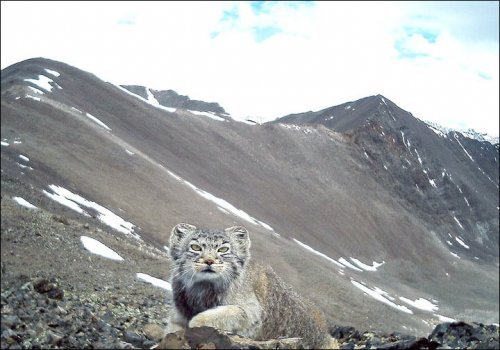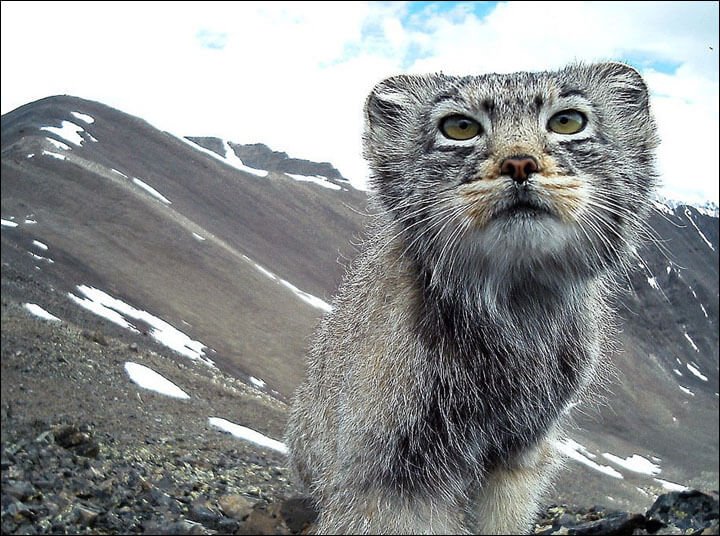Endangered Cat Caught on Camera in Russia

Cameras in Russia caught an endangered cat when an expedition to the Altai Nature Reserve in South Siberia made a remarkable discovery.
They photographed a feline known as the Pallas (also called the manul). This is an animal that human eyes often don’t see. In addition, it appears on the Red List of the International Union for Conservation of Nature. On that list, the species is “near threatened” or endangered. That’s why it’s remarkable that an endangered cat has been photographed.
Learn about the history behind this amazing photograph
This is an endangered species. As as result, it is reluctant to show itself to people – for good reasons. So, there are not many opportunities to see pictures of these cats in their natural habitat.
On this occasion, the record was made during a recent expedition organized by the World Wide Fund for Nature (WWF). This included the Argali Regional Fund (for animal protection), and the Altai Nature Reserve.
Catching a Pallas cat on camera is a most unusual feat, and everyone admired this beautiful feline.
Some information on the manul
As you will no doubt appreciate, these endangered cats are very large and plump. However, they are the same size and weight as a domestic cat on average. Their long and dense coat—to cope with the low temperatures in the places they inhabit—makes them seem larger than they really are.
The manul has approximately 9,000 hairs per square centimeter which grows to a length of 7 centimeters.
This carnivorous mammal belongs to the order of the Felidae family. Their habitat extends primarily, in addition to Siberia, to the steppes of Mongolia and Tibet. It lives at heights of up to 5 thousand meters above sea level.
This species was classified in 1776 by German zoologist Peter Simon Pallas, who called it Felis manul. However, recent discovery assigns the species to the Otocolobus genus.
A camera captured pictures of the elusive and endangered cat in the Siberian steppes. Also known as the manul, this short-legged solid feline is hunted by poachers for its thick and beautiful coat.
More information on the Pallas cat
Other distinguishing features of these beautiful cats are:
- Short legs and claws.
- Plump and solid body.
- Tail with long, furry, black rings.
- The color of the coat varies from ash gray to russet.
- Eyes with circular pupils.
- Ears are set low and separated.
- A flattened face.
In addition, these are animals with solitary habits that typically hunt during the low light hours. Their main food is small rodents and birds. Although they spend a large part of the day hidden in the cracks of rocks or in burrows, they also like to lied in the sun – just like good, well-behaved cats.
An endangered cat species hunted by poachers

The female manul has between 2 and 6 kittens per litter after a gestation period of between 66 and 75 days. The kittens weigh approximately 90 grams and are covered by a thick coat. They will reach adult size in six months.
In captivity, Pallas cats can live up to 11 years. However, although they are able to reproduce in these conditions, the survival rates are low, due to the infections they suffer. The reason seems to be in an underdeveloped immune system since, in their isolated natural habitat, they would not be exposed to viruses.
Furthermore, the manul, is a victim of poaching and is hunted for its fur. However, due to their elusive behavior, there is a lack of specific information on the subject. It is also difficult to estimate the exact number of these cats living on the planet today.
Thankfully, we are able to enjoy these beautiful pictures due to the camera that caught a Pallas cat in its splendid domain. For that, we are very grateful.
Source: Siberian Times (iberiantimes.com/home/)